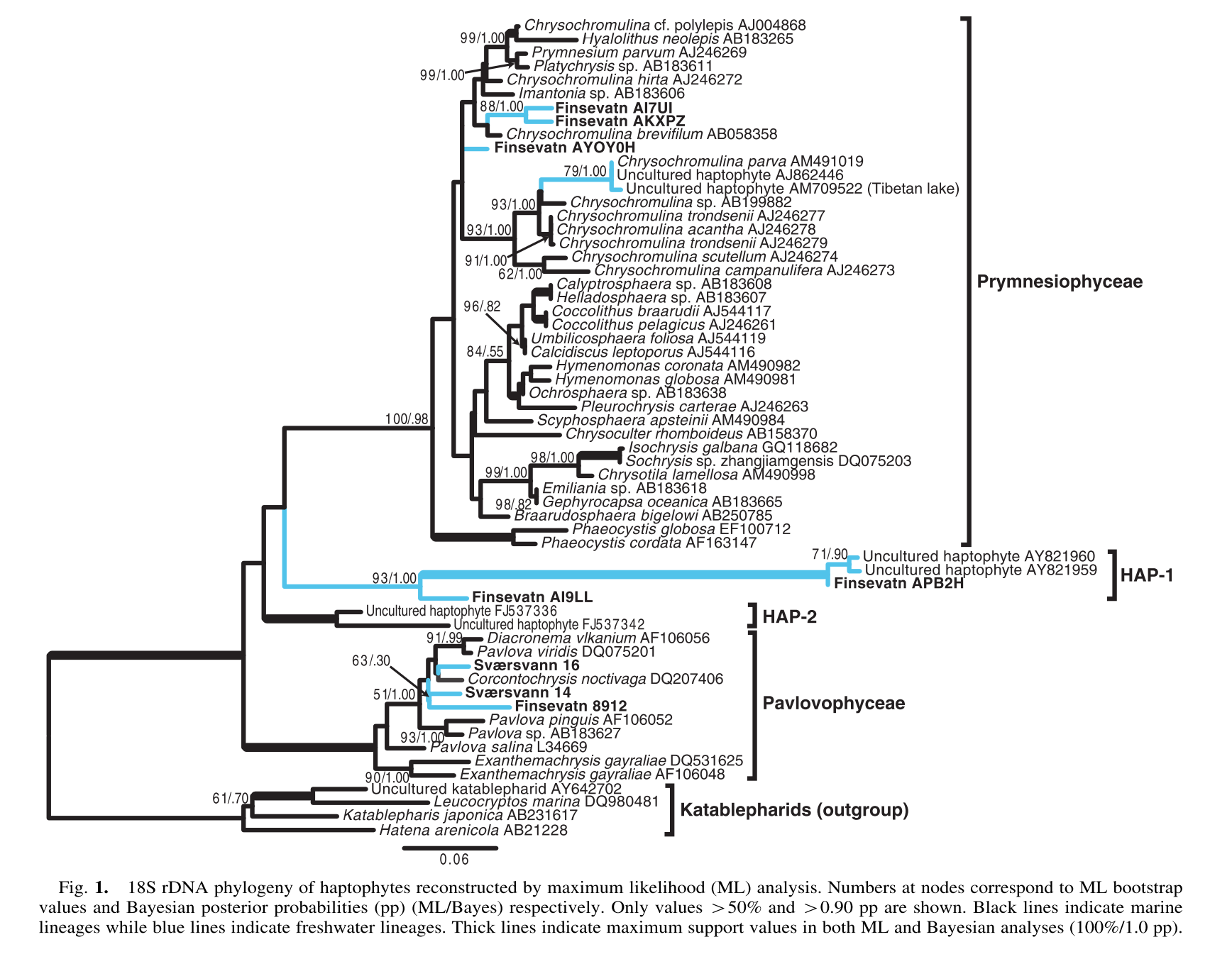Marine-freshwater colonizations of haptophytes inferred from phylogeny of environmental 18S rDNA sequences
Shalchian-Tabrizi, K., Røberg, K. R., Ree, D. K., Klaveness, D. and Bråte, J. 2011. J Euk Microbiol. 58: doi:10.1111/j.1550-7408.2011.00547.x

Abstract
The Haptophyta is a common algal group in many marine environments, but only a few species have been observed in freshwaters, with DNA sequences available from just a single species, Crysochromulina parva Lackey, 1939. Here we investigate the haptophyte diversity in a high mountain lake, Lake Finsevatn, Norway, targeting the variable V4 region of the 18S rDNA gene with PCR and 454 pyrosequencing. In addition, the freshwater diversity of Pavlovophyceae was investigated by lineage-specific PCR-primers and clone library sequencing from another Norwegian lake, Lake Sværsvann. We present new freshwater phylotypes belonging to the classes Prymnesiophyceae and Pavlovophyceae, as well as a distinct group here named HAP-1. This is the first molecular evidence of a freshwater species belonging to the class Pavlovophyceae. The HAP-1 and another recently detected marine group (i.e. HAP-2) are separated from both Pavlovophyceae and Prymnesiophyceae and may constitute new higher order taxonomic lineages. As all obtained freshwater sequences of haptophytes are distantly related to the freshwater species C. parva, the phylogeny demonstrates that haptophytes colonized freshwater on multiple independent occasions. One of these colonizations, which gave rise to HAP-1, took place very early in the history of haptophytes, before the radiation of the Prymnesiophyceae.